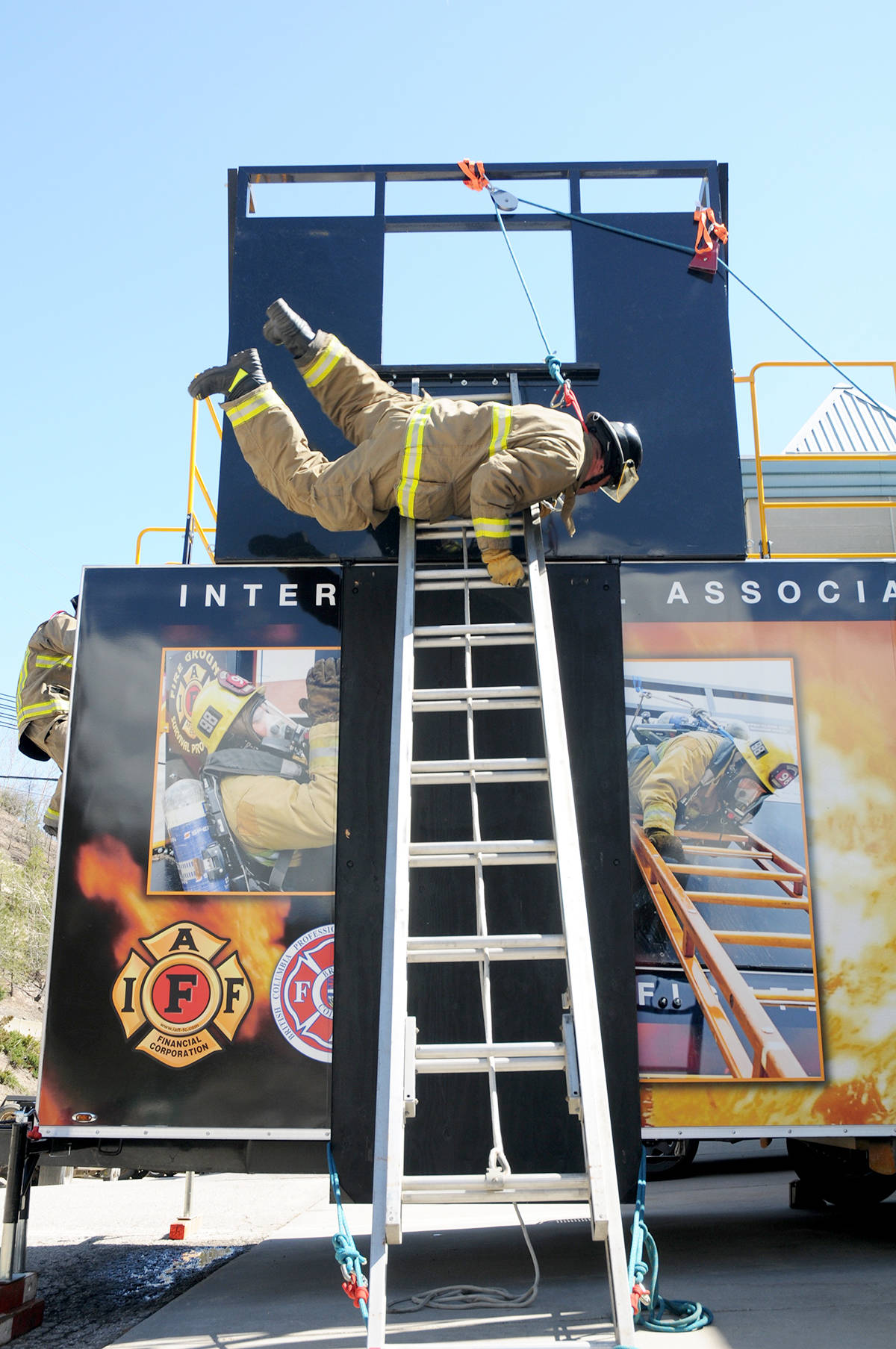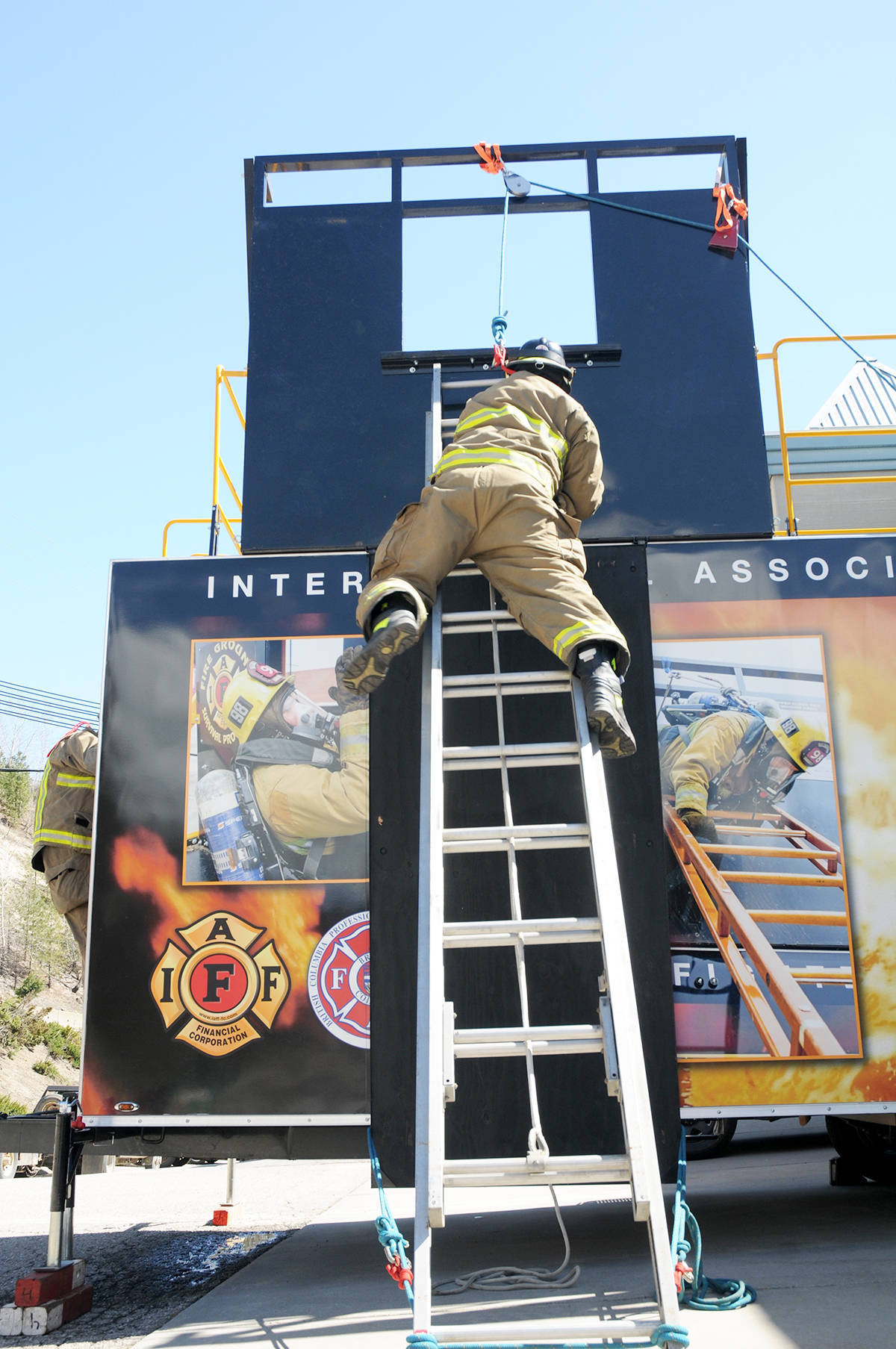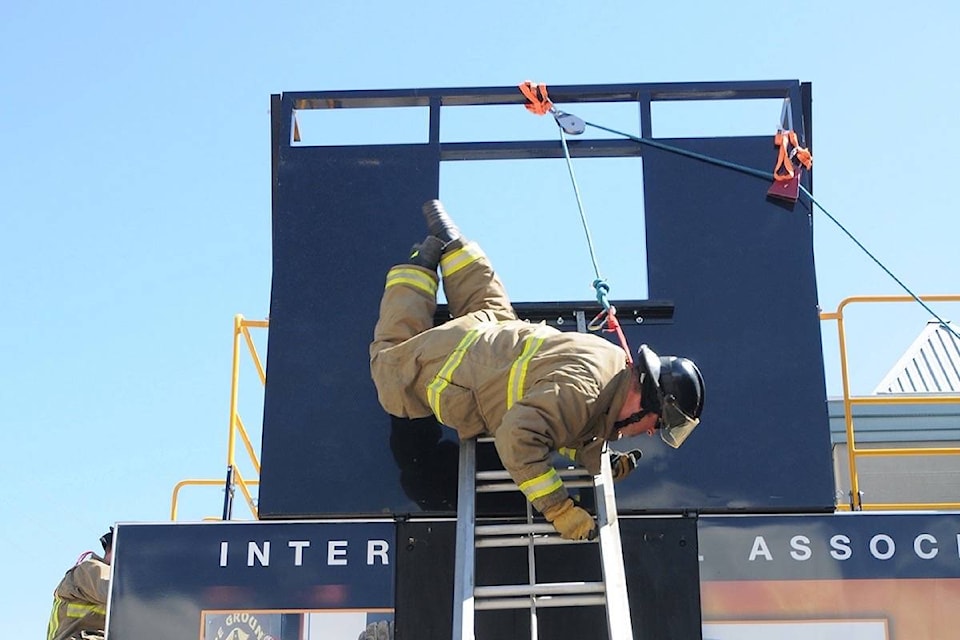How does a six-foot-two firefighter - carrying 65 pounds of rescue equipment - fit through a two-foot by two-foot square?
It certainly isn’t by leaving anything to chance - it’s through hard core survival training.
In cooperation with the BC Professional Firefighters and the IAFF (International Association of Firefighters), career firefighters with Station 374 Trail were able to practice critical life-saving techniques last week using a trailer of props and tools through the Fire Ground Survival Program.
What it comes down to is repetition, says Lee DePellegrin, Trail firefighters president, IAFF Local 941.
Repetition leads to muscle memory and muscle memory leads to confidence - which is the key outcome in self-rescue training.
“Over the years, studies have been done on firefighter deaths and what causes us to die in fires,” DePellegrin said.
“A lot of it is due to needing to be able to self rescue, because if we get trapped in a room or in a house or structure where we need to be able to get out and there’s no time to get out by following the hose back – we need to teach our members how to do ladder bail outs (for example). It’s a quick way to get out.”
The IAFF trailer is a resource that must be booked, but comes at no-cost as it enables all B.C. firefighters to sharpen their self-rescue skills to the same standard. One prop looks like an enclosed duct with all kinds of wires hanging within. This gives the firefighter an opportunity to practice disentanglement, because falling wires in a structure fire is a hazard that has caused the death of at least two firefighters. Another tool allows a mock escape, or window hang, from an upper floor exit. Escape steps are outlined on a prop which notes the death of two firefighters and the injury of four others in January 2005 when they were forced to exit through fourth floor windows.
The SCBA (Self-contained Breathing Apparatus) familiarization is another technique the trailer outlines as “Breathe - Organize - Act.” In December 2003 when a firefighter was killed in a furniture warehouse, he was found with his face piece removed and air remaining in his apparatus.
Finally - and quite an impressive drill to observe - is the wall breach, or “option of last resort.”
Clad in bulky turnout gear, the firefighter learns how to escape fire by kicking a hole through a wall and exiting through the opening, which can be quite small. The drill provides practice for SCBA removal and other maneuvers. The prop notes in February 2005, a 39-year old captain died after being trapped by the partial roof collapse of a vacant one-story wood frame dwelling.
“A lot of the larger departments have training props and training facilities to hone their skills,” DePellegrin explained. “Whereas before, we’ve would have to build or buy props like this. They (IAFF) want everyone, all firefighters across B.C., to have availability to the same equipment, so it teaches us all the same skills.”
He says the training is for low frequency but high risk events.
“We don’t get a lot of structure fires,” DePellegrin noted. “It’s not everyday that we go in to a fire and not in every structure fire does a firefighter get trapped. But when a firefighter does get trapped we need to be able to act quickly because death can be within minutes.”
The trailer can be booked throughout the year so when it comes to the community, fire crews can plan to train for the allotted amount of time.
“We want to make sure all our firefighters are trained to the highest level to be able to self-rescue,” DePellegrin added. “And there is no cost to our employer to bring this in and do our training.”
Captain and Regional Training Officer Glen Gallamore presented his activity summary to East End directors during their April 10 committee meeting.
“Kootenay Boundary Regional Fire Rescue members continue to show great dedication to our communities,” Gallamore reported. “In addition to responding to 1,864 incidents, members completed 8,244 training hours, up from 6,728 training hours in 2017.”
The fire department is under the direction of Regional Fire Chief Dan Derby with 14 career firefighters and 98 paid-on-call firefighters.


